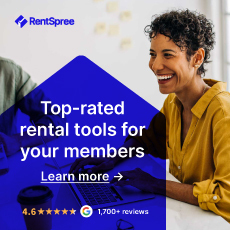 Victor Lund of the WAV Group has published a document entitled “Upstream Revealed“. Basically he has taken Craig Cheatham’s recent statements and clarified them. In the example below Victor’s comments are in parens.
Victor Lund of the WAV Group has published a document entitled “Upstream Revealed“. Basically he has taken Craig Cheatham’s recent statements and clarified them. In the example below Victor’s comments are in parens.
Upstream also is designed to serve as a platform for controlling access to and distribution of the data, along with the establishment of the terms for any use. Participating brokers would designate within Upstream which specific data would be accessed and manage the conditions for use. (Brokers control their data on a dashboard like they do for listings syndication today. The difference is that other data sets like agent records, firm records, consumer records, and vendor rosters are all in the same place.)
Re-reading Craig’s statements with Victor’s comments made the whole thing easier to read. Victor decodes the pretencious “corporate speak” of the original language. I like it a lot. One quibble, I would have preferred they numbered each section.
Having said that, I have a question about how data will be handled with vendors (this is Vendor Alley after all). Here’s what the statement says (with Victor’s clarifications)
”
Application providers, from those assisting with external display/use to those powering systems used inside of brokerages, are set to benefit from the single set of “clean” data directly from Upstream with the broker’s permission. Brokers are hopeful this will allow real estate companies and their representatives to deploy data sets to vendors directly and efficiently, eliminating the need for MLSs to deal with data integration issues and giving vendors one format nationwide instead of hundreds of databases and data layouts. (Micro case study – a broker with 360 listings wants to switch virtual tour vendors. It requires data license agreements with five MLSs and data mapping that takes weeks to implement. The listings that come back are watermarked and low resolution. The only way to improve this is to manually duplicate the data).
I admit that I might not totally understand everything here. And I have to say I really love this concept in theory. But how would Upstream handle different listing statuses? Say a vendor has a product that sends out “Just Sold” postcards, or “Under Contract” flyers. Or a CMA that needs Expired listings? Are those in Upstream on just the MLS? Do they sync? How often?
You can download the PDF here: Upstream Revealed

I have an article going out next week that begins to dive into components of the data.
As for some of your questions
CMA – you will continue to use the MLS API for that.
Just Sold – can use either MLS or Upstream
But think beyond the listing. The CMA branding that has the agent and broker elements that you need to configure your application could be populated through the Upstream API. That data is largely absent or deficient in the MLS API that you access today.
Think about the customer record – the agents contact records and client records with deep filtering would be available. Rather than loading each client record into Cloud CMA to send a report, the agent’s contact records would be made available through the Upstream API – all contact records synchronized across all applications.
I could go on – but wait for the drip next week.
Cool, got it. Look forward to the next report Victor.